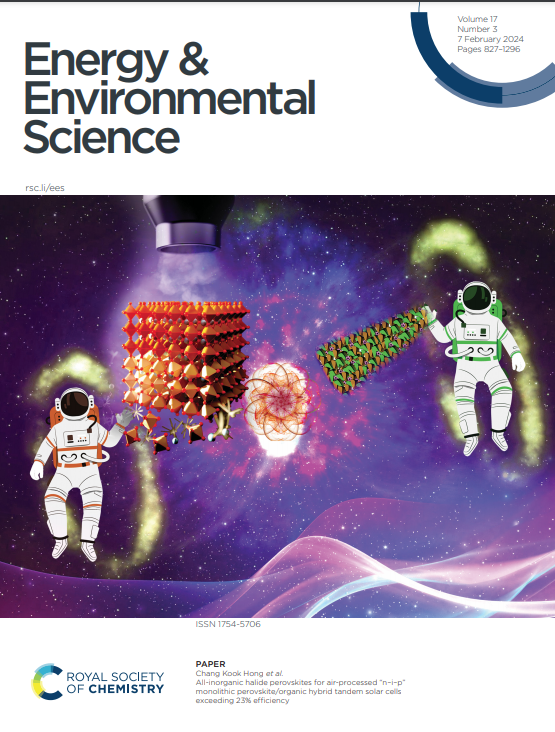Mass-customization of organic photovoltaics and data production for machine learning models precisely predicting device behavior
IF 30.8
1区 材料科学
Q1 CHEMISTRY, MULTIDISCIPLINARY
引用次数: 0
Abstract
High-throughput experimentation (HTE) combined with machine learning (ML) has emerged as a powerful tool to accelerate material discovery and optimize fabrication processes. However, in photovoltaics field, only a few studies have successfully applied this approach using industrially relevant techniques, roll-to-roll (R2R) process. We developed universal and extendable data structure for ML training that accommodates upcoming materials while retaining compatibility with existing dataset. Using MicroFactory platform, which enables mass-customization of organic photovoltaics (OPVs), we fabricated and characterized over 26,000 unique cells within four days. To guide selection of ML model for precisely predicting device behavior, photovoltaic parameter and J–V prediction models to forecast device parameters and J–V curves were developed, respectively. Random forest model proved most effective, achieving a PCE of 11.8% (0.025 cm²)—the highest record for fully R2R-fabricated OPVs. By integrating accumulated datasets with smaller new-component datasets, we enhanced model performance for PM6:Y6:IT-4F and PM6:D18:L8-BO systems, showing that models trained on binary systems can predict ternary performance and enabling the development of generalized ML models for future high-performance materials.有机光伏的大规模定制和精确预测设备行为的机器学习模型的数据生产
高通量实验(HTE)与机器学习(ML)相结合已成为加速材料发现和优化制造工艺的强大工具。然而,在光伏领域,只有少数研究成功地应用了这种方法,使用工业相关技术,卷对卷(R2R)工艺。我们为ML训练开发了通用和可扩展的数据结构,以适应即将发布的材料,同时保持与现有数据集的兼容性。使用MicroFactory平台,可以大规模定制有机光伏(opv),我们在四天内制造并表征了26,000多个独特的电池。为了指导ML模型的选择,准确预测器件行为,分别建立了光伏参数预测模型和J-V预测模型来预测器件参数和J-V曲线。随机森林模型被证明是最有效的,实现了11.8% (0.025 cm²)的PCE,这是完全r2r制造的opv的最高记录。通过将积累的数据集与较小的新组件数据集集成,我们增强了PM6:Y6:IT-4F和PM6:D18:L8-BO系统的模型性能,表明在二元系统上训练的模型可以预测三元系统的性能,并为未来高性能材料的广义ML模型的开发提供了可能。
本文章由计算机程序翻译,如有差异,请以英文原文为准。
求助全文
约1分钟内获得全文
求助全文
来源期刊

Energy & Environmental Science
化学-工程:化工
CiteScore
50.50
自引率
2.20%
发文量
349
审稿时长
2.2 months
期刊介绍:
Energy & Environmental Science, a peer-reviewed scientific journal, publishes original research and review articles covering interdisciplinary topics in the (bio)chemical and (bio)physical sciences, as well as chemical engineering disciplines. Published monthly by the Royal Society of Chemistry (RSC), a not-for-profit publisher, Energy & Environmental Science is recognized as a leading journal. It boasts an impressive impact factor of 8.500 as of 2009, ranking 8th among 140 journals in the category "Chemistry, Multidisciplinary," second among 71 journals in "Energy & Fuels," second among 128 journals in "Engineering, Chemical," and first among 181 scientific journals in "Environmental Sciences."
Energy & Environmental Science publishes various types of articles, including Research Papers (original scientific work), Review Articles, Perspectives, and Minireviews (feature review-type articles of broad interest), Communications (original scientific work of an urgent nature), Opinions (personal, often speculative viewpoints or hypotheses on current topics), and Analysis Articles (in-depth examination of energy-related issues).
 求助内容:
求助内容: 应助结果提醒方式:
应助结果提醒方式:


